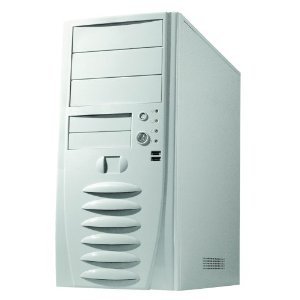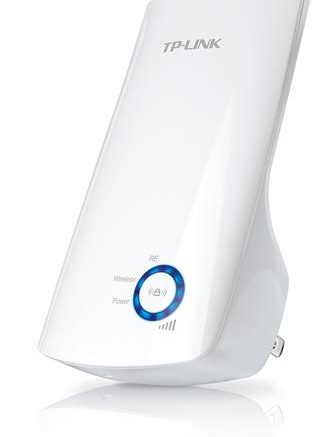About fifteen years ago I made a mistake. I put my internet connection in the room where the computer was. Remember, this was back when computers looked like this:

and you couldn’t pick them up and take them anywhere. They had laptops back then but they were super expensive and smartphones? Forget about it, they hadn’t been invented.
The internet connection is still in the same room and unfortunately that room is all the way at one side of the house. Of course, I don’t use one of those beige boxes any more… I carry around an iPad. Sometimes the wi-fi gets a little sketchy though, and that’s why I use a wireless range extender.
A range extender is sort of like a router. Your router takes information from the internet and distributes it around your home safely and securely. A range extender takes that idea one step further… it connects to your wi-fi and then makes a whole new wi-fi zone wherever you want it to be.
Range extenders are generally considered to be a more budget-friendly solution than an access point which uses a wired connection to give you better wi-fi coverage where you need it. An access point will give you faster, more hassle-free networking, but is generally harder to set up and more expensive, especially if you need to run a cable to the room where you want it to be.
This new zone is a second wireless network inside your home; most range extenders require you to log out one wireless network and log into another one in order to use them. Luckily it’s pretty easy.

On most computers, find the icon for the wireless network (at upper right on a Mac and lower right on a PC) and click on it. You’ll see the list of available networks… just connect to one. You’ll need to enter the passcode once and then your computer should remember it.
On smartphones and tablets, it can be a little harder but often times the name of a new network just pops up and you can pick it.
Setting up the range extender depends on your particular setup. If you have wireless protected setup (most routers do) it can be as easy as pressing one button. If not, follow the instructions for setting up the extender by hooking it up to a computer.
Put the range extender where it will get decent signal from your router. Its antennas are going to be more sensitive than those of a laptop or tablet so a good rule of thumb is, put the range extender 1/3 or the way from your dead spot to your router. Generally there will be an indicator to show you that it’s connected.
Voila… no more dead spot!
In general, the connection through a wi-fi extender is going to be slower than that from a router or access point, but it’s going to be faster than trying to connect to that same wireless network from the far fringes. Wi-Fi extenders are often very useful for streaming where you don’t see some of the slowness in initial connection that is characteristic of range extenders. Once the connection is made, the speeds are more like what you’d get with a regular wireless connection; the perception of slowness comes from the initial lag in connecting which is caused by the request bouncing between different devices before it gets out of your home into the internet.





